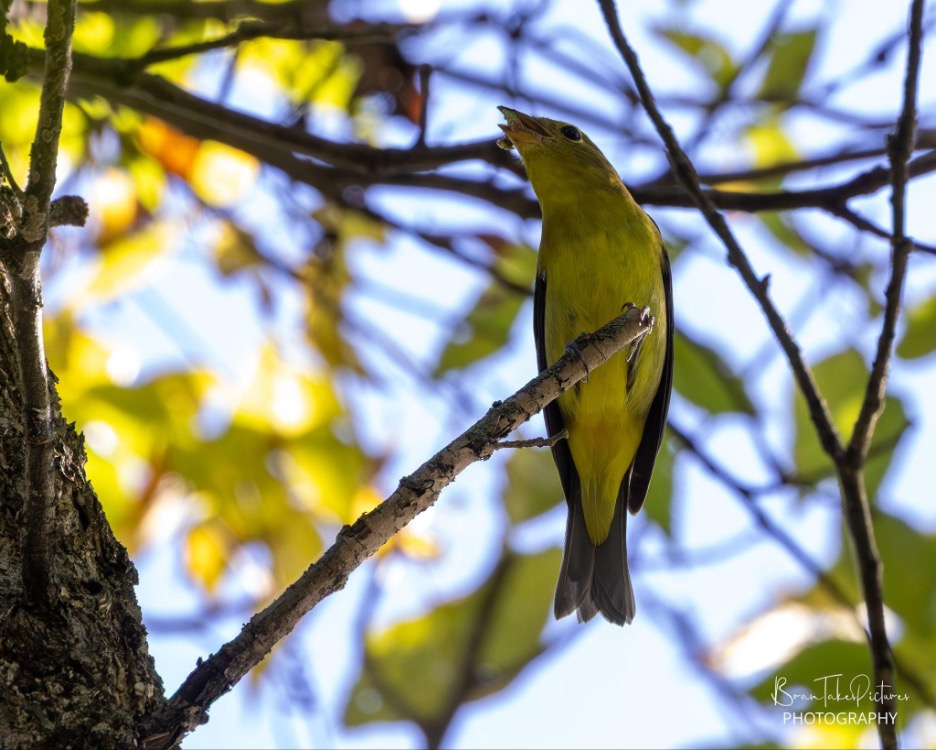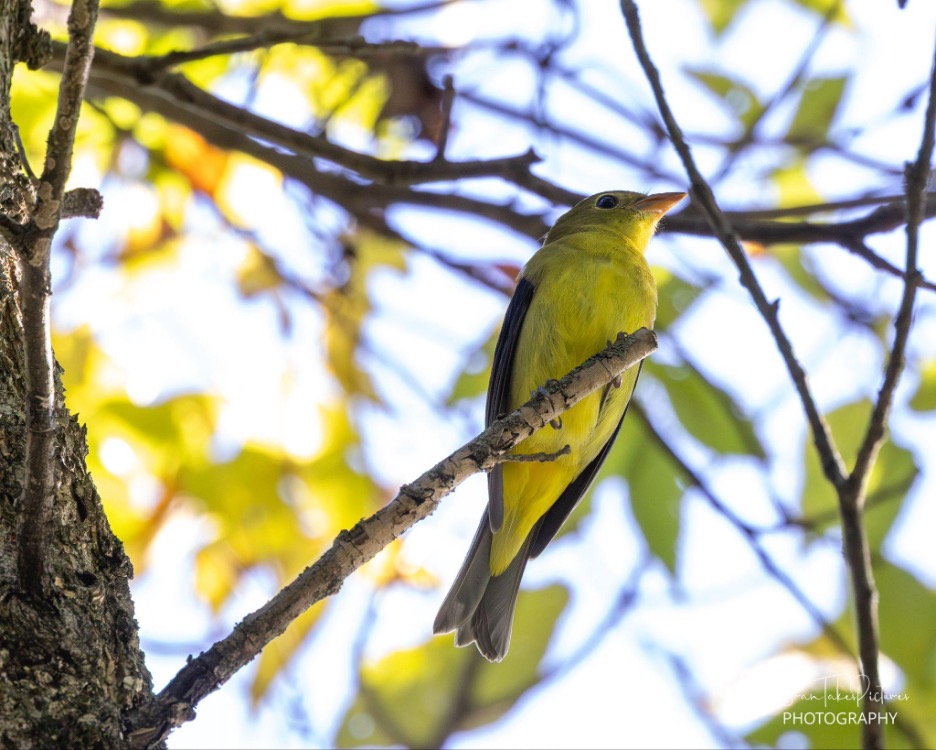By Brandon McQueen, Louisville Audubon Society President
Most of us spend the night before a birding day getting our gear ready: tripod cleaned and working smoothly; glass clear; batteries charged; backpack packed with extra memory cards; clothing laid out—including layers on chilly mornings that might warm by mid-day—all in preparation for what we assume will be the best birding morning imaginable.
The alarm goes off too early—or maybe you were too excited to sleep. As you race out the door, you check the weather report, and it’s looking good. The sun is just starting to peek over the horizon. You arrive at your birding site. The sun is still rising, making it a little too dark for positive IDs, and a dense fog blankets the ground and obscures the trees—inhibiting visibility. Foiled! But you’re not giving up.
Fall migration, and the birding’s not so easy
Fall migration is challenging—especially here in the Louisville area, where the weather can be unpredictable and turn quickly.
But no matter the season, birding is always rife with unknowns, because birds are … well, birds. Even in a place with trees, food, water, and seemingly perfect conditions, the bird action isn’t always guaranteed. So, what are we to do?
My take? You might not always have a Big Day—but you should never have a bad day.
Learning to enjoy simply being in nature is essential. Even if those 23 target warbler species don’t show up at the birding location you chose that day, don’t overlook the quiet moments. They’re a wonderful time to watch and learn what happens when things slow down. For example, common birds like Red-Bellied Woodpeckers, White-Breasted Nuthatches, and Tufted Titmice provide endless entertainment if you sit quietly and observe their patterns.
The subtle beauty of fall
Fall migration is often silent; with breeding season past, most birds are no longer singing as much, as loudly, or at all.
Birds sing in spring to find mates and raise young—although some leave the work to others, like the Yellow-Billed Cuckoo, a brood parasite.
In the fall, birds’ songs, if you’re lucky to hear them, have softened into mellow chips and chirps. Their bright spring and summer colors often fade into tones of gray, brown, yellow, and olive, mirroring the turning leaves of fall.
Staying present in the woods

In the fall, I often spend less time exploring and more time focusing on familiar spots I’ve come to know well.
One recent day when I was out birding, my day felt somewhat uneventful—until I spotted a bright female Scarlet Tanager. I listened to her chirping and watched her find a grub—an important source of protein to fuel her migratory journey to her wintering grounds.
This unexpected sighting lifted my spirits. When my morning wasn’t going as planned, I thought about heading home, but I remembered why I started birding: the joy of being in nature and taking a walk through the woods.
Whether you’re a beginner or an experienced birder, it’s important to reflect on moments spent doing what you love—and sometimes to set aside eBird checklists or Merlin app alerts.
Take a moment to look up, down, and around at all that nature has to offer. Sometimes you’ll find an unexpected bonus—like that surprise Scarlet Tanager—but either way, remember what really matters: that you took the time to enjoy the simple pleasure of being out in the field on a nice autumn day.
Forget the checklist for a moment. The real reward is in the stillness—the quiet company of leaves and feathers.
Photo credit: all photos courtesy of Brandon McQueen

No responses yet